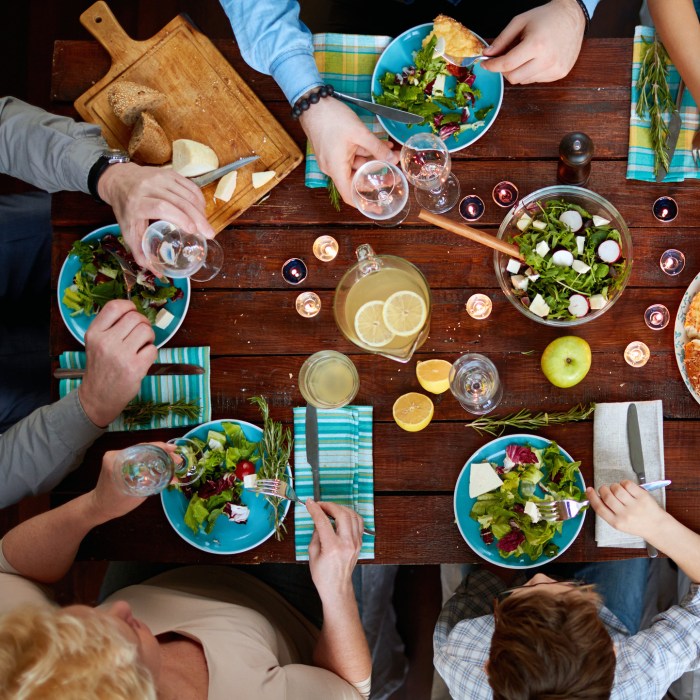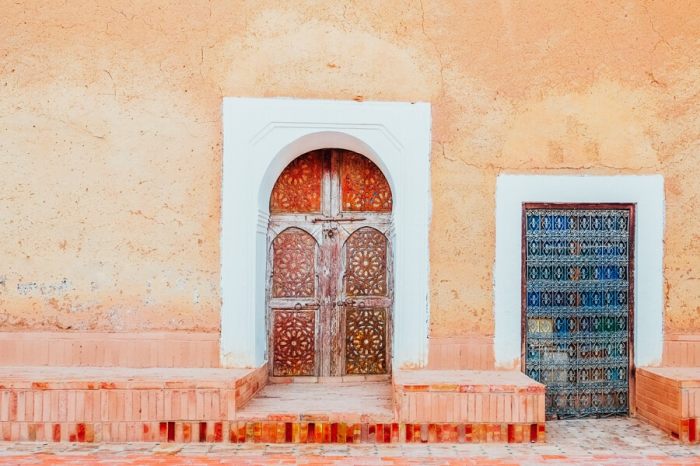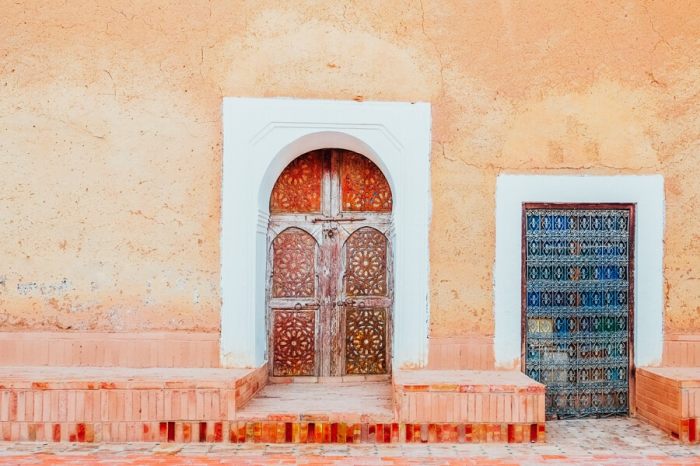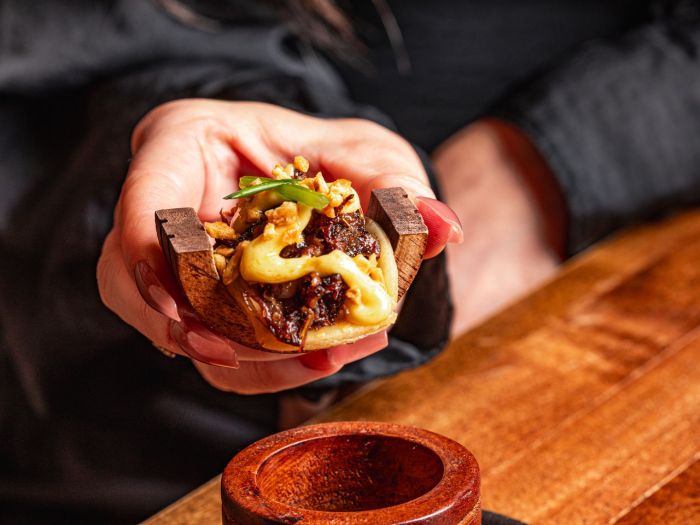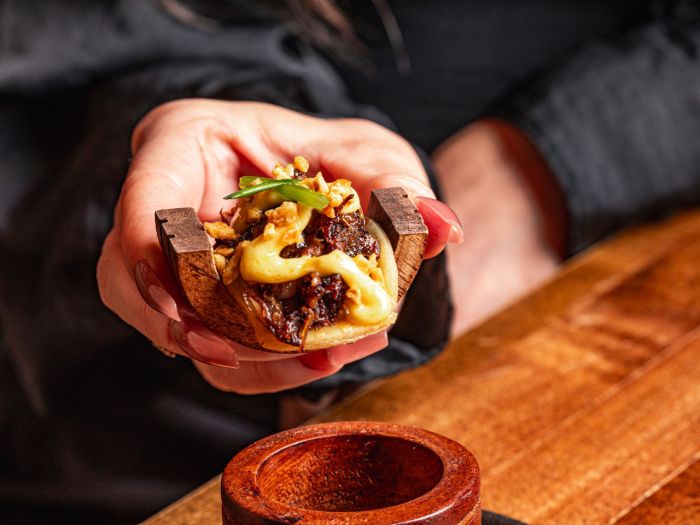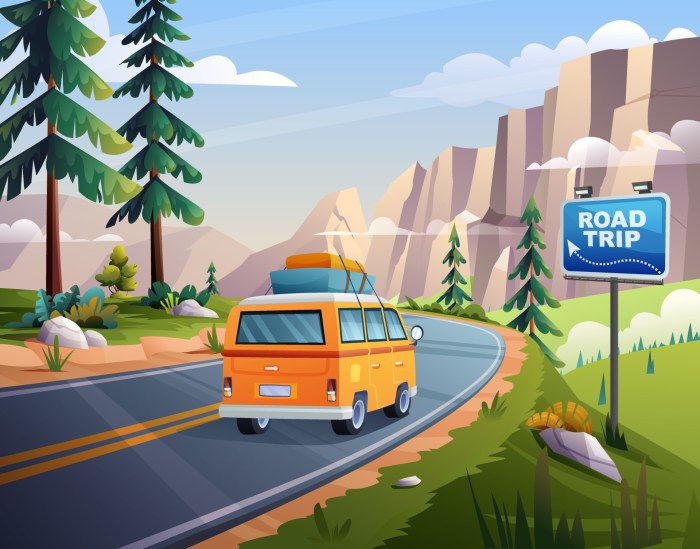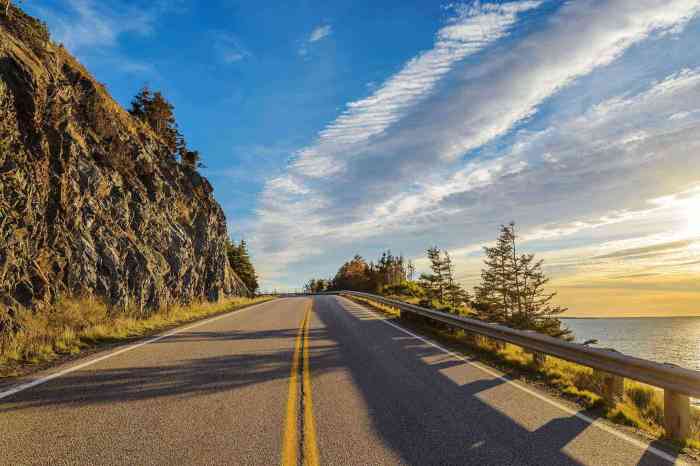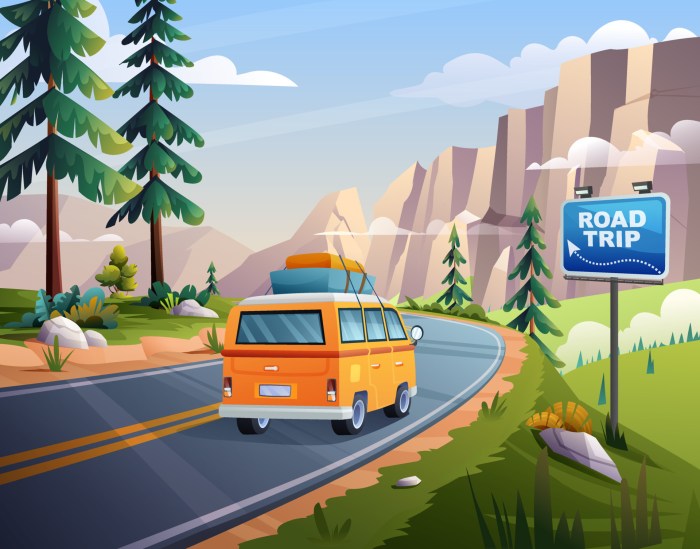Top free things to do in Marrakesh: Uncover the vibrant heart of Morocco without breaking the bank. From exploring the ancient souks to immersing yourself in the city’s rich culture, Marrakesh offers a wealth of free experiences waiting to be discovered. This guide will unveil the hidden gems, offering a taste of the city’s soul, perfect for budget-conscious travelers and those eager to connect with local life.
Marrakesh, a city steeped in history and culture, invites you to wander through its captivating streets. Experience the vibrant energy of the medina, a labyrinth of bustling markets and hidden courtyards. Discover the beauty of its gardens, offering respite from the bustling city. This guide will highlight the myriad of free activities, allowing you to soak up the authentic Moroccan atmosphere without spending a dime.
Introduction to Marrakesh’s Free Activities

Marrakech, a vibrant city nestled in the heart of Morocco, pulsates with a unique blend of ancient history and modern energy. Known for its stunning architecture, bustling souks, and rich cultural heritage, it draws visitors from around the world. The city’s atmosphere is a captivating mix of fragrant spices, the rhythmic calls to prayer, and the vibrant colors of traditional clothing.
From the towering minarets of the Koutoubia Mosque to the intricate mosaics of the Bahia Palace, Marrakech offers a visual feast for the eyes. Beyond the well-known attractions, there are numerous opportunities to immerse yourself in the city’s free spirit.This exploration delves into the myriad of free activities available in Marrakech, highlighting the city’s remarkable charm and historical significance, allowing visitors to connect with its vibrant soul without emptying their pockets.
It emphasizes the importance of experiencing the city beyond the usual tourist traps, discovering the authentic heartbeat of Marrakesh.
Exploring Marrakech’s Public Spaces
Marrakech boasts a rich tapestry of public spaces, each contributing to the city’s unique character. These spaces have played a vital role in shaping Marrakech’s identity, providing a platform for communal gatherings and cultural expression throughout history. From the tranquil gardens to the bustling marketplaces, the city’s public spaces have witnessed centuries of stories unfold.
- Jardin Majorelle: This exquisite garden, created by Yves Saint Laurent and his partner, is a haven of tranquility. Its vibrant blue walls and lush greenery provide a serene escape from the city’s bustle. Visitors can stroll through the meticulously designed gardens, admire the exotic plants, and appreciate the artistic vision that shaped this oasis. A quiet moment amidst the bustling city is guaranteed.
- Place Jemaa el-Fna: This iconic square is a sensory feast. From snake charmers to storytellers, the square is alive with a myriad of activities. The vibrant atmosphere, the intoxicating aromas of food stalls, and the captivating displays of artisans offer a captivating experience. Witnessing the energy of the square and observing the unique performances is a must-do.
- Koutoubia Mosque (Exterior): The impressive Koutoubia Mosque is a testament to Moroccan architecture. While the interior is restricted to Muslims, the exterior offers a captivating architectural marvel. The grandeur of the mosque, its intricate carvings, and the sheer scale of the structure are truly awe-inspiring. Visitors can admire the exterior architecture without any restrictions, allowing them to appreciate the architectural beauty of the mosque.
Immersive Experiences in Marrakech’s Culture
Engaging with the local culture is one of the most enriching aspects of exploring Marrakech. From the intricate artistry of the souks to the soulful melodies of traditional music, the city’s cultural richness is easily accessible. It provides opportunities for authentic interaction and deeper understanding of Moroccan traditions.
- Wander through the Djemaa el-Fna Square Souks: The labyrinthine souks offer a vibrant tapestry of sights and smells. Discover intricate crafts, explore vibrant textiles, and experience the energy of the bustling market. Negotiating prices and engaging with vendors provide a tangible connection to the city’s vibrant culture.
- Observing the artisans and their work: Marrakech is known for its talented artisans. Whether it’s watching a cobbler craft intricate shoes, a weaver create vibrant textiles, or a potter shape beautiful vessels, observing these craftspeople provides a glimpse into their artistry and dedication. This offers a deeper understanding of the craftsmanship and tradition of the city.
Exploring the Medina’s Free Gems
Stepping into Marrakesh’s Medina is like stepping back in time. The labyrinthine alleyways, vibrant colours, and the scent of spices create a unique atmosphere. Hidden within this ancient heart are countless treasures, many entirely free to explore. This section dives into some of the most captivating free attractions, highlighting their historical significance, architectural beauty, and the cultural experiences they offer.The Medina, a UNESCO World Heritage site, boasts a rich tapestry of history, culture, and architecture.
Exploring its free attractions offers a unique opportunity to connect with the city’s soul, understand its past, and appreciate its present. These places often present an authentic glimpse into Moroccan life, allowing visitors to engage with local artisans, shopkeepers, and residents. The free nature of these experiences allows for a more immersive and less structured exploration, letting the magic of Marrakesh unfold organically.
Key Free Attractions in the Medina
The Medina’s free attractions are more than just places to visit; they are portals to the heart of Moroccan culture. Each location holds a piece of the city’s story, from its ancient origins to its vibrant modern life. Wandering through these spaces allows visitors to engage with the city’s energy and discover hidden corners.
Table of Free Attractions
| Location | Brief Description | Historical Context | Key Features |
|---|---|---|---|
| Koutoubia Mosque (Exterior) | The imposing exterior of the Koutoubia Mosque is a sight to behold. | The Koutoubia Mosque, one of the most famous mosques in Morocco, was built in the 12th century. | Stunning architecture, intricate details in the exterior walls, a powerful symbol of Marrakesh’s Islamic heritage. While the interior is not open to the public, the exterior presents a grand view. |
| Sadian Tombs | The Saadian Tombs, a serene oasis within the Medina. | The Saadian Tombs are a complex of tombs built by the Saadian dynasty in the 16th century. | Beautiful, ornate, and intricately designed tombs. Their architecture blends Islamic and Moroccan influences, showcasing the opulence of the Saadian period. A tranquil escape within the bustling Medina. |
| Djemaa el-Fna Square (excluding shows) | The heart of Marrakesh, teeming with life and activity. | A central gathering place for centuries, its atmosphere has been a cultural and commercial hub for ages. | A vibrant atmosphere, lively stalls, and the unique sights and sounds of the square, best experienced before the evening shows begin. |
| Ben Youssef Madrasa (Exterior) | The exterior of the Ben Youssef Madrasa, a stunning example of Moroccan architecture. | Built in the 14th century, this madrasa is a historical landmark. | An imposing exterior showcasing intricate designs and architectural details. A testament to Moroccan craftsmanship and religious history. |
| Souks (Markets) | Explore the bustling and colourful souks. | The souks are the historic markets, offering an array of goods. | A sensory overload of sights, sounds, and smells. A chance to discover unique souvenirs, experience local life, and engage with vendors. Negotiating is part of the experience. |
Free Outdoor Experiences in Marrakesh
Marrakesh, a city steeped in history and vibrant culture, offers more than just its iconic landmarks. Beyond the bustling souks and the grandeur of the palaces, a wealth of free outdoor spaces awaits, providing a tranquil escape and a chance to immerse yourself in the local atmosphere. These green oases and public squares offer a different perspective on the city, showcasing its beauty and the rhythm of daily life.The city’s parks and gardens, often overlooked by tourists focused on the bustling medina, provide a welcome respite from the crowds.
These outdoor spaces are not just places to relax; they are vital components of Marrakesh’s social fabric, serving as gathering spots and reflecting the city’s unique character. These free experiences offer a deeper connection to the city’s heart and soul.
Jardin Majorelle
This internationally renowned garden, a vibrant oasis of blue and green, is a must-see for any visitor. Designed by Yves Saint Laurent and his partner, the garden showcases a stunning array of exotic plants and flowers, including rare cacti and succulents. The peaceful atmosphere and meticulously maintained gardens provide a sanctuary from the city’s energy. The stunning blue walls and vibrant flowers create a captivating backdrop for photos, and the overall ambiance fosters relaxation and contemplation.
Visitors can stroll through the pathways, admire the architectural details, and soak in the beauty of the meticulously designed landscape. The garden’s allure lies in its tranquil ambiance and unique aesthetic, making it a perfect spot for a leisurely afternoon.
Place des Frères
This central square is the heart of Marrakesh’s social life. The vibrant atmosphere is palpable, filled with the sounds of street performers, vendors selling their wares, and the chatter of locals going about their daily business. The square’s design, with its open space and surrounding buildings, provides a dynamic setting that captures the pulse of the city. It’s a place where the city’s rhythm is most visible.
Visitors can simply sit and observe, or participate in the lively activity by interacting with the local vendors and performers. The vibrant energy and diverse atmosphere make this a truly unforgettable experience.
Parc de la Ligue Arabe
This park, located on the outskirts of the medina, offers a more secluded escape from the city’s bustle. The park’s large expanse provides ample space for strolling, relaxing, or simply observing the diverse flora. The atmosphere is serene and peaceful, a welcome contrast to the often-crowded medina. Visitors can enjoy the shade of the trees, appreciate the tranquil ambiance, and experience the natural beauty of the park.
The park’s location on the edge of the city also allows for glimpses into the surrounding agricultural lands, offering a unique perspective on Marrakesh’s rural connections.
Table: Free Outdoor Experiences in Marrakesh
| Location | Description | Visitor Experiences | Nearby Attractions |
|---|---|---|---|
| Jardin Majorelle | A vibrant oasis of exotic plants and flowers. | Relaxing, photo opportunities, contemplation | Koutoubia Mosque, Bahia Palace |
| Place des Frères | The heart of Marrakesh’s social life. | Observing local life, interacting with vendors | Djemaa el-Fna Square, Ben Youssef Madrasa |
| Parc de la Ligue Arabe | A secluded park with diverse flora. | Strolling, relaxing, observing the surroundings | Agdal Oasis, Marrakesh Zoo |
Free Cultural Immersions: Top Free Things To Do In Marrakesh

Marrakech’s vibrant culture is best experienced through its free festivals, markets, and events. These offer unique opportunities to connect with the local community and witness traditions firsthand. Immerse yourself in the city’s heart and discover the soul of Morocco through these captivating experiences.These free cultural immersions are not just passive observations; they are dynamic interactions. You’ll find yourself drawn into the energy of the events, learning about local customs and traditions through the simple act of engagement.
These are authentic experiences that go beyond the typical tourist itinerary, providing a profound understanding of the city’s rich cultural tapestry.
Local Markets: A Sensory Symphony
Marrakech’s souks are a sensory feast. They are a vibrant tapestry of sights, sounds, and smells. Wander through the bustling lanes, marveling at the intricate craftsmanship displayed in every stall. Bartering, a common practice, is a key part of the experience, offering a chance to interact with vendors and learn about the local economy. The lively atmosphere and the unique products on offer create an unparalleled immersion into Moroccan culture.
Festivals and Events: Rhythms of the City
Marrakech hosts a calendar of festivals throughout the year, each celebrating a specific aspect of Moroccan culture. From the vibrant colors and rhythms of music festivals to the traditional craftsmanship showcased during arts and crafts events, there’s a celebration for every interest. These events often involve local music, dance, and food, creating a lively and festive atmosphere. Participation is encouraged; you’ll feel the pulse of the community as you observe and engage with the festivities.
A Glimpse into Local Customs
At these events, observing local customs is key to understanding the depth of Moroccan culture. Modesty in dress is often appreciated, especially when visiting religious sites. Respectful interaction and mindful communication are essential. The pace of life in the souks might seem slower, but that’s part of the experience. Patience and a willingness to engage are rewarded with a deeper understanding of the local customs and traditions.
Sample Events: Dates and Descriptions
- Festival of Lights (Mawlid): (Dates vary) A celebration of the birth of the Prophet Muhammad, featuring traditional music, dance, and elaborate displays. Expect large gatherings and vibrant decorations. Interaction opportunities include listening to music and observing the rituals. Dress modestly if visiting religious sites.
- Festival of Arts and Crafts: (Dates vary) A showcase of Moroccan artistry, where you can witness skilled artisans creating unique crafts. Expect a wide array of handmade goods, from textiles to pottery. Interaction is possible through asking questions about the crafts and processes.
- Souk Tour (Daily): (Daily) An exploration of the labyrinthine souks, showcasing the city’s rich markets and crafts. Learn about the intricate trade networks and artisan techniques, observing the daily life of vendors and customers. Engage with vendors for insights into local traditions.
Free Educational Opportunities
Marrakech, a city steeped in history and culture, offers numerous free educational opportunities for visitors. Beyond the bustling souks and vibrant squares, the medina holds a wealth of knowledge waiting to be discovered. Exploring these free museums and historical sites provides a unique insight into Moroccan heritage, offering a deeper appreciation for the city’s past. Free access to these locations allows you to engage with the city’s narrative without the financial constraints of paid attractions.Discovering these hidden gems often leads to a more profound connection with the local culture and history than a quick tour.
You’ll encounter authentic stories and learn about the intricate details that make Marrakesh truly unique.
Free Museums and Historical Sites
Exploring Marrakesh’s free museums and historical sites provides a fascinating glimpse into its rich past and diverse cultural heritage. These sites, often overlooked in favor of paid attractions, hold valuable educational resources that offer unique perspectives on Moroccan history, art, and craftsmanship. Understanding the history and significance of these locations adds a richer dimension to your experience in Marrakesh.
| Location | Brief History | Educational Value | Accessibility Details |
|---|---|---|---|
| The Koutoubia Mosque | A prominent landmark, the Koutoubia Mosque, is a masterpiece of Almohad architecture. Its construction spanned the 12th and 13th centuries. | The mosque offers insights into the grandeur and artistry of Almohad architecture, a significant period in Moroccan history. The mosque’s architectural details, from intricate carvings to the vast courtyard, demonstrate the technical expertise of the time. Visitors can learn about the design principles, construction techniques, and cultural context surrounding this historical structure. | Open to visitors (non-Muslims) during specific hours. Appropriate attire required. |
| The Bahia Palace | Constructed in the 19th century, the Bahia Palace represents a pinnacle of Moroccan architectural and decorative artistry. | The Bahia Palace showcases the opulence and craftsmanship of a wealthy Moroccan household. Visitors can appreciate the elaborate interior design, including intricate tilework, stucco, and woodwork, which provide a glimpse into the aesthetic preferences and societal structures of the time. | Open to visitors. Appropriate attire required. |
| Saâdian Tombs | The Saadian Tombs, dating back to the 16th century, are a significant example of Moroccan funerary architecture. | These tombs showcase the rich artistry and intricate craftsmanship of the Saadian dynasty. The intricate tilework and decorative elements within the tombs are valuable resources for understanding the artistic and aesthetic traditions of that period. The tombs are a silent testament to the craftsmanship of the time. | Open to visitors. Appropriate attire required. |
| Marrakech’s Medina | The Medina is a labyrinthine complex of streets and alleyways, representing a living historical archive. | The Medina, with its traditional houses, souks, and mosques, provides a tangible connection to daily life in Marrakesh throughout the centuries. Visitors can observe the everyday practices and cultural traditions that have been passed down through generations. | Open to visitors. Be mindful of navigating the crowded areas and observe local customs. |
Free Local Interactions
Marrakesh’s vibrant heart beats with the rhythm of daily life, offering countless opportunities for interaction with the locals. Beyond the bustling souks and enchanting medina alleyways, lie genuine connections waiting to be discovered. Embracing these interactions allows for a deeper understanding of Moroccan culture and the spirit of the city. Respectful engagement is key to fostering positive experiences and preserving the local way of life.
Respectful Interactions with Locals
Respectful interaction is crucial for a positive experience and a harmonious exchange. Avoid imposing yourself on the local community. Observe and engage with the local culture naturally. Showing genuine interest and curiosity, without being intrusive, is vital. Respectful interaction fosters trust and allows for a richer understanding of the culture.
Cultural Sensitivity Guidelines
Understanding the cultural nuances is essential for navigating interactions smoothly. Morocco is a predominantly Muslim country. Modesty is appreciated in dress, especially when visiting religious sites. Engage with locals respectfully, acknowledging their customs and beliefs. Be mindful of personal space and avoid overly familiar behavior.
Respectful attire and mindful behavior are essential components of a positive cultural exchange.
Examples of Interactions and Etiquette
Engage in casual conversations with vendors, shopkeepers, or people you encounter in the streets. A simple “As-salamu alaykum” (peace be upon you) demonstrates respect. Ask questions about their lives, their work, or the city. Listen attentively to their responses. Showing genuine interest in their perspectives builds rapport.
Always offer a polite “Shukran” (thank you) for any assistance or service. Learn basic Arabic phrases. Even a few simple greetings and words of appreciation go a long way.
Local Interactions, Tips for Engaging Respectfully, and Cultural Sensitivity Guidelines
- Interaction Examples: Engage in conversations with street vendors, ask about local crafts, inquire about their daily routines, and listen attentively to their stories. Offer genuine compliments on their craftsmanship or local cuisine. A simple gesture of respect, like offering a smile, can make a positive impact.
- Tips for Engaging Respectfully: Approach interactions with genuine curiosity and respect. Be mindful of personal space. Avoid being overly demanding or intrusive. Dress modestly when visiting religious sites. Learn basic Arabic phrases, such as greetings and expressions of gratitude.
- Cultural Sensitivity Guidelines: Be aware that direct eye contact may be perceived differently. Be mindful of personal space and avoid physical touch unless initiated by the local person. Do not photograph people without their permission. Avoid loud or boisterous behavior in public places.
Free Evening Activities
Marrakech’s magic truly shines in the evening. The city awakens to a different rhythm, filled with the sounds of street performers, the gentle murmur of conversations in the souks, and the vibrant energy of bustling cafes. Embarking on free evening adventures unveils a whole new dimension of the city’s charm.Exploring Marrakech’s evening scene offers a unique opportunity for cultural immersion.
From captivating street performances to the vibrant atmosphere of the city’s various squares, every corner holds a story waiting to be discovered. This section highlights the best places to experience free evening activities, focusing on the ambiance and safety considerations.
Evening Ambiance and Locations
Marrakech’s evening ambiance is diverse, offering a wide array of experiences. From the lively squares pulsating with life to the serene courtyards of the medina, each location evokes a distinct atmosphere. The Djemaa el-Fna square, for instance, is a hub of activity, with storytellers, musicians, snake charmers, and food stalls creating a captivating spectacle. Other areas, like the surrounding souks and cafes, offer a more intimate and relaxed atmosphere.
Marrakech offers tons of free fun, from exploring the Djemaa el-Fna square to wandering through the souks. While you’re there, you might also consider checking out the amazing experience of space perspective balloon kennedy space center – a truly unique way to experience the world from above. Ultimately, though, Marrakech’s free attractions offer a fantastic blend of culture and beauty.
Opportunities for Cultural Immersion
Free evening activities provide excellent opportunities for cultural immersion. Witnessing traditional Moroccan music, interacting with local artisans, or simply observing the daily routines of the locals offers a glimpse into the rich cultural tapestry of the city. Watching the intricate henna designs being applied to the hands of locals, or enjoying a traditional Moroccan tea ceremony in a local café can enhance the understanding of the city’s unique culture.
Marrakech offers a wealth of free activities, from exploring the Djemaa el-Fna square to wandering through the souks. If you’re looking for a taste of the stunning beaches of the US, then check out the best beach destinations in Gulf Shores, Alabama, gulf shores alabama best beach destinations in the us. However, back in Marrakech, don’t miss the opportunity to get lost in the labyrinthine alleys and discover hidden patios and cafes for a truly memorable experience.
Free Evening Activities Table
| Location | Activities | Ambiance | Safety Tips |
|---|---|---|---|
| Djemaa el-Fna Square | Street performers (storytellers, musicians, snake charmers), food stalls, vendors | Lively, bustling, energetic, a vibrant mix of people and sights. | Be mindful of your belongings. Avoid displaying expensive jewelry or electronics. Stay aware of your surroundings. |
| Souks (markets) | Exploring the stalls, observing the artisans, browsing for souvenirs | Bustling, varied sounds, aromas of spices and local goods. Can be crowded. | Be cautious when bargaining. Keep valuables close. Stick to well-lit areas. |
| Cafes in the Medina | Enjoying a coffee or mint tea, people-watching | Relaxed, intimate, often featuring traditional Moroccan decor. | Check for local customs before taking photos. Respect the privacy of others. |
| Jardin Majorelle | Strolling through the beautiful gardens, enjoying the peaceful atmosphere. | Serene, peaceful, beautifully landscaped, typically less crowded in the evenings | Follow park guidelines. Stay aware of your surroundings, especially in the case of potential risks associated with night-time visits. |
Practical Tips for Experiencing Free Activities
Marrakech’s beauty lies not just in its stunning architecture and vibrant souks, but also in the myriad of free experiences available to visitors. From exploring hidden medina lanes to enjoying the city’s vibrant atmosphere, taking advantage of these free activities can significantly enhance your trip. This section provides practical tips for maximizing your free experiences while ensuring a safe and enjoyable visit.Maximizing your free time in Marrakech requires a blend of understanding the city’s rhythm, respecting local customs, and employing smart strategies.
This section offers practical advice to make the most of your free explorations, from navigating the city to interacting with locals.
Navigating the City
Understanding Marrakech’s layout and transportation options is crucial for efficiently exploring free activities. The city center, the Medina, is a maze of narrow alleyways, but it is also a treasure trove of experiences. Familiarize yourself with the general layout, and don’t be afraid to get lost—sometimes the most rewarding discoveries are made on unplanned detours.
Transportation
Walking is the most quintessential way to experience the Medina’s charm. The narrow streets and vibrant atmosphere are best appreciated on foot. For longer distances or to reach areas outside the Medina, consider using taxis or the public bus system. Negotiate fares with taxis in advance, and be sure to use licensed taxis for safety.
Exploring Marrakech’s top free attractions is a fantastic way to experience the city’s vibrant culture. Wander through the Djemaa el-Fna square, soaking in the atmosphere, or climb the Koutoubia Mosque for panoramic views. Finding affordable ways to experience a city like Barcelona, for example, can be achieved by checking out tips on how to travel on a budget, like those found in this great article about barcelona on a budget.
The vibrant souks offer incredible sights and sounds, and you can easily spend a whole day getting lost in their maze of stalls, all without breaking the bank. It’s a truly special experience.
Safety
Safety is paramount in any city, especially when exploring independently. Be mindful of your belongings, especially in crowded areas like the souks. Keep valuables close and avoid displaying expensive jewelry or electronics. Be aware of your surroundings and trust your instincts. Avoid walking alone at night in less-trafficked areas.
Local Customs
Respecting local customs is essential for a positive experience. Dress modestly, especially when visiting religious sites. Bargaining is expected in the souks, but be polite and respectful. Engage with locals with a friendly demeanor, and be prepared to answer questions with courtesy.
Saving Time and Optimizing Experiences
Planning your itinerary can significantly enhance your free explorations. Identify areas of interest beforehand, and create a loose plan of action. This allows you to allocate time effectively and explore different neighborhoods without getting overwhelmed. Prioritize activities that are of particular interest to you, and be flexible enough to adapt to unexpected opportunities. Arrive early to avoid the midday heat and crowds, which are more intense during peak tourist season.
Best Time to Visit, Top free things to do in marrakesh
The best time to visit Marrakech for free activities is during the shoulder seasons, typically spring and autumn. These periods offer pleasant weather and fewer crowds compared to the peak summer months. Avoid the hottest part of the day during the summer months, as heat can significantly affect your enjoyment. The spring and autumn seasons also offer pleasant weather, reducing the need for excessive clothing.
Interacting with Local Vendors and Businesses
Engage with local vendors and businesses respectfully and politely. Engage in friendly conversations, and show appreciation for their products and services. Be prepared to negotiate prices in the souks, but do so with courtesy. Don’t be afraid to ask questions about local customs and traditions.
Practical Tips
- Accommodation: Consider staying in the Medina for easy access to free activities. Riads and guesthouses often offer a more immersive experience than hotels.
- Transportation: Utilize taxis and public buses for longer distances, but prioritize walking within the Medina.
- Safety: Be aware of your surroundings, keep your valuables secure, and trust your instincts. Avoid walking alone at night.
- Local Customs: Dress modestly, especially when visiting religious sites. Bargaining is expected in the souks, but be polite and respectful.
Illustrative Examples of Free Activities
Unveiling Marrakesh’s treasures doesn’t require a hefty budget. Free activities abound, offering a unique window into the vibrant culture and captivating atmosphere. Embrace the unexpected, immerse yourself in local life, and discover hidden gems without breaking the bank. This section dives into practical examples, showcasing how to integrate diverse free experiences into your Moroccan adventure.
A Typical Day of Free Activities
A typical day of free activities in Marrakesh involves a blend of exploration, interaction, and immersion. Morning might start with a leisurely stroll through the Djemaa el-Fna square, absorbing the vibrant atmosphere and observing the storytellers, musicians, and snake charmers. The afternoon could be spent exploring the labyrinthine souks, haggling (politely!) for souvenirs, and discovering artisan workshops. An evening might involve a captivating performance in the square or a delightful dinner at a local restaurant, where you can witness the local customs and enjoy the delicious flavours of Moroccan cuisine.
Incorporating Different Types of Free Activities
Crafting a free itinerary involves thoughtful planning and an open mind. Start by identifying the areas of interest—history, culture, food, or simply observing daily life. A morning in the Medina can be combined with an afternoon at a local market, followed by a late evening walk through the square. The key is to weave these diverse experiences into a cohesive journey, embracing the spontaneity that free activities often bring.
Experiencing Local Life Through Free Cultural Immersion
One of the most rewarding aspects of free activities in Marrakesh is the opportunity to engage with local life. Imagine yourself wandering through the Djemaa el-Fna square, watching the captivating storytellers weave tales of the city’s past. Pay close attention to the subtle gestures and traditions, the way people interact, and the rhythm of the marketplace. Engage in brief conversations with vendors, listening to their stories and perspectives.
This is a direct immersion into Moroccan culture, offering insights beyond any guided tour. You can even try to understand the local language a bit, it will enhance the experience.
Engaging in Free Local Interactions
Engaging with locals is an essential part of experiencing any culture. A simple “As-salaamu alaykum” (peace be upon you) and a genuine smile can open doors to fascinating conversations. Observe local customs—some might find direct eye contact or a too-close approach to be inappropriate. Respect their space and mannerisms. Engage in simple interactions with vendors in the souks, asking about their craft or the history of the items they sell.
These interactions, even brief, create a deeper understanding and appreciation for the local culture.
Sample Itinerary for a Free Day
| Time | Activity | Location | Experience |
|---|---|---|---|
| 9:00 AM | Morning Stroll | Djemaa el-Fna Square | Observe the bustling atmosphere, listen to storytellers, and soak in the energy. |
| 11:00 AM | Souk Exploration | Medina Souks | Wander through the labyrinthine alleys, discover artisan workshops, and haggle for souvenirs. |
| 1:00 PM | Local Lunch | Restaurant in the Medina | Enjoy a traditional Moroccan lunch at a local eatery, interacting with the staff and other patrons. |
| 2:30 PM | Relaxation & Observation | Maisons de la Photographie | Visit a local cafe and observe the everyday life of the locals. |
| 4:00 PM | Evening Entertainment | Djemaa el-Fna Square | Enjoy the evening performance by musicians, storytellers, and snake charmers. |
Conclusion
In conclusion, Marrakesh’s allure extends far beyond its famous attractions. By embracing the free activities, you can truly experience the city’s soul. From exploring the historic medina to interacting with locals, this guide has provided you with an array of options to craft your own unforgettable Moroccan adventure. So, pack your bags, embrace the unknown, and get ready to uncover the magic of Marrakesh for free!



